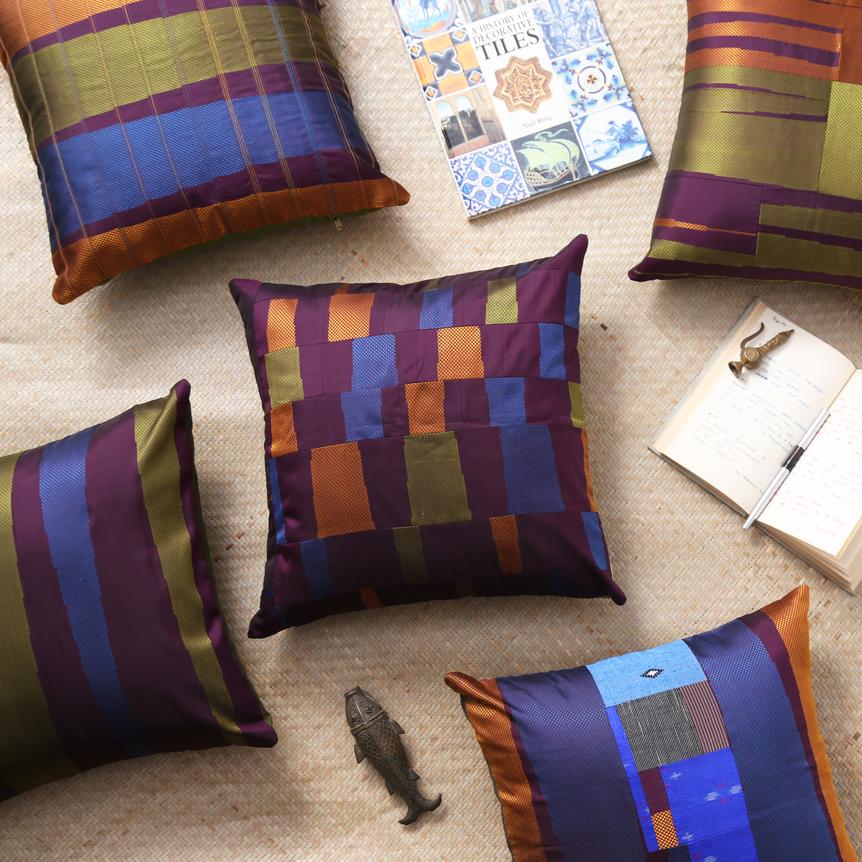
Reimagining Kanjivarams with Kambli Studio
Today, Upcycling is the new buzzword!
Whilst recycling involves destruction of products to create something new, upcycling is the process of breathing new life into products in disuse. It is all about creating something new with the product in its current state, giving it a new lease of life. Both are beneficial to conserving the environment, but upcycling is more innovative, cost-effective and creative.
Upcycling benefits the environment far more than recycling. It is not only practical but also enhances the quality of the product. Since it requires less effort and does not use other raw materials, it ensures reduced air or water pollution, helps in conservation as well as minimizes greenhouse gas emissions, making it far more eco-friendly than recycling.
There are social benefits of upcycling: from celebrating traditional craftsmanship to inspiring rural industry and sustaining small scale businesses. Upcycling reduces cost of manufacture, thereby endorsing its economic value. You too can bring upcycling into your life by buying upcycled products or getting creative with innovative ideas and trying your hand at it.
Upcycling or “creative reuse” is not new, it has been a part of most cultures across the globe. The colourful carousel of Godhari patchwork quilts of Maharashtra, made from piles of old sarees or scraps hang enticingly on the walls of Mumbai slums. The pre-Vedic art of Kantha embroidery using the humble running stitch, dates back to 1500 BC.

Rafoogari is the darning and mending technique which creates a new avatar of worn out or damaged clothing and fabrics. This age-old art form may be considered dated, but it resonates with a deep meaning. The hallmark of Rafooqari is that the expert rafooqar or “cloth healer” should not leave a mark of this work. His work should be invisible.
The Japanese cousin of Kantha embroidery is Sashiko, which uses a special thread for the simple running stich to embroider pieces of worn out or damaged fabric, creating wearable poems in textiles. Boro is a class of Japanese textiles mended, patched or stitched together to create multi-layered material, typically dyed with Indigo dyes.
Kintsugi literally translates as “golden joinery” and is a technique that honours and celebrates imperfections. It is the art of repairing broken pottery with a paste of gold powder and lacquer. Using the upcycling principle of highlighting imperfections, Maki-e uses lacquer as the base, dusted with gold or silver powder whilst still wet.
Upcycling uses the circular economy model, wherein with a little help from mending, restoring or stitching, the resources are used for as long as possible. Today even European and American designers subscribe to ethical fashion as against the “use and throw” culture. Most of the textiles produced are recyclable, with a bit of imagination and a creativity.
India isn’t far behind in its efforts at turning these worn out products into cherished treasures. Every square inch of these exquisite handwoven silk sarees at Sarangi, is very precious, so we have worked with Kambli Studio, inspired by the techniques of preservation to give them a new life. We give them a renewed life span and form, creating attractive accessories to brighten your home.
Some of the sarees at Sarangi may have been impacted and weathered with time. Sarangi collaborated with the talented Kamala of Kambli Studio to upcycle these well-loved silks to give them a renewed life-span and a different form. What you get are useful and decorative avatars of these “impacted by time” vintage silks, which are sure to gladden your heart and home.

- A portion of the sari that has given way at the fold. While the rest of the sari was perfect it doesn't pass the Sarangi quality standard.

We will bring you more on Sarangi’s efforts at making upcycling a way of life. If you have ideas or specific requirements, we would love to hear from you and customize your dreams into reality. Reach us at saris@sarangithestore.com


